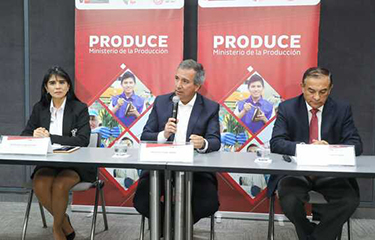The Peruvian Production Ministry’s (PRODUCE) cancelation of the main anchovy fishing season in the country’s north-central zone will negatively affect the production of fishmeal, but its stated justification is guaranteed sustainability of the biomass.
In May, PRODUCE delayed launching the season due to a high presence of juveniles, resulting from the effects of El Niño. That delay had already caused consternation among industrial fishing fleets that are responsible for the world’s largest anchovy fishery, and the largest fishery by volume in the world.
Based on the results, PRODUCE observed in exploratory fishing excursions in May, the ministry authorized another expedition on 3 June to update the information on the anchovy biomass’s distribution and size structure. At the time, it established a preliminary total allowable catch (TAC) of 1.09 million metric tons (MT) – well below half of traditional TAC levels.
The cancelation of the season was unlikely to surprise any stakeholders, according to Enrico Bachis, market research director at IFFO - The Marine Ingredients Organization.
“We were clear about what was going to happen after the fishing companies decided to voluntarily suspend their operations due to the high incidence of juveniles after five of the seven days of exploratory fishing granted by the authorities,” Bachis told SeafoodSource in a statement. “The decision of the fishing union and the government has been very wise since this will allow the anchovy to safely reproduce.”
The latest exploratory excursions found the incidence of juveniles reached 86.3 percent in numbers and made up 77 percent of the weight of the anchovy biomass. On 8 June, upon recommendation from the Peruvian Sea Institute (Imarpe), PRODUCE decided to call off the season altogether owing to the deficient biological conditions for the development of extractive activities.
“The sea conditions are not there for the start of the fishing season. An important issue for the ministry is the preservation of the fishing resource, and if we allowed the anchovy fishing activity to develop, what we would do is depredate the resource,” PRODUCE Minister Raúl Pérez Reyes said at the time.
The industry at large generally shares that view.
Cayetana Aljovín, president of Peru’s National Fisheries Society (SNP), praised the fishery management actions.
“A recent study prepared by several world-class scientists, including Santiago de la Puente from Peru, from the Institute for Oceans and Fisheries at the University of British Columbia in Vancouver, Canada, and Ray Hilborn from the University of Washington in the United States, concludes that the Peruvian anchovy fishery is an example of adaptive fisheries management in a context of uncertainty due to the high climatic variability that characterizes the Peruvian sea,” she said at the end of May, just before PRODUCE decided to cancel the fishing season.
“Another important piece of information from the study is that the anchovy biomass is currently higher than it was in 1972 at the height of the fishing boom,” she added. “This is because in those years – and subsequent ones – despite the fact that the weather conditions were much better than today, fishing management was nonexistent.”
Adriana Giudice, the CEO of San Isidro, Peru-based fishing company Austral Group, said ...
Photo courtesy of PRODUCE








